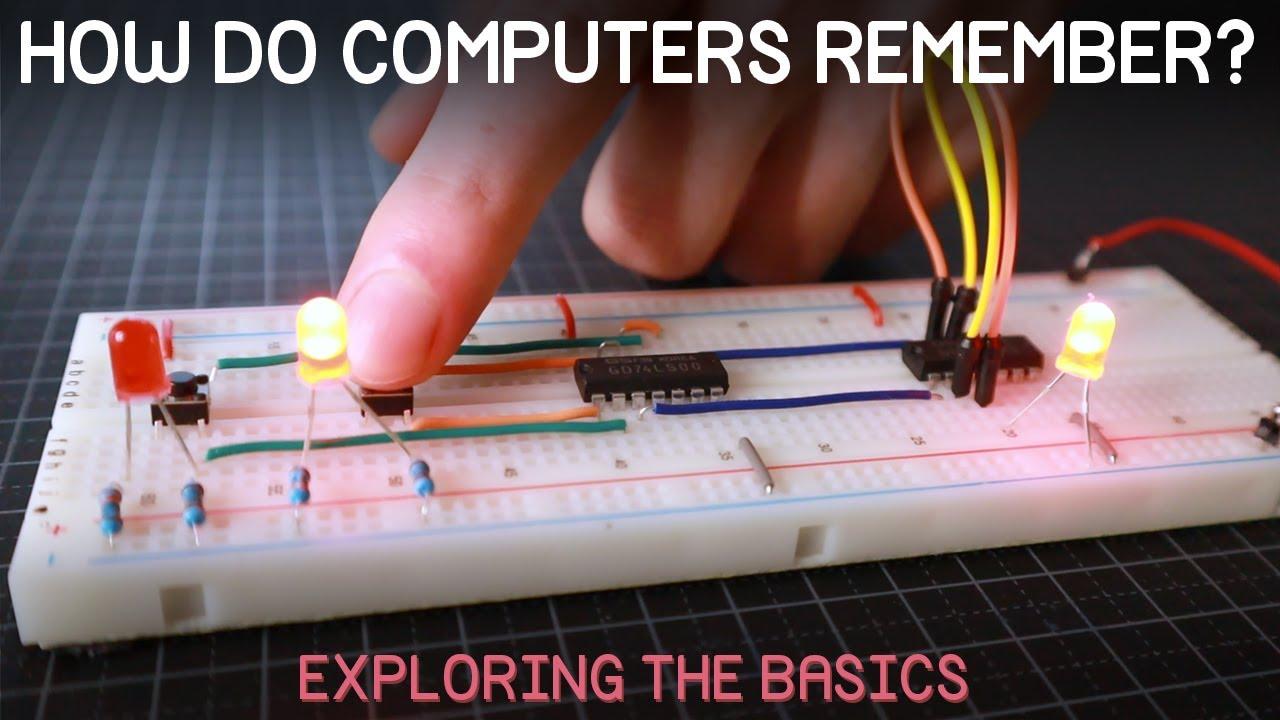How Do Computers Actually Remember?

The concept of memory is fundamental to understanding how computers operate and store information. From the binary digits that underpin digital representation to the intricate layers of memory hierarchy, each component plays a crucial role in shaping how computers "remember."
Introduction to Computer Memory
Computer memory is the backbone of every computing device, enabling it to store and retrieve data swiftly. It encompasses several types, each serving specific purposes within the system. The primary types include Random Access Memory (RAM), Read-Only Memory (ROM), and cache memory, all of which contribute to the overall functionality and efficiency of the computer. Also read: Enroll in Data Science Course with Placement Guarantee.
Digital vs. Human Memory
Unlike human memory, which relies on biological processes, computer memory operates on digital principles. Computers store and manipulate data using binary digits, known as bits, which can represent either a 0 or 1. This binary system forms the foundation for all digital data storage and processing.
Binary Representation
Computers store and process data in binary form, where each bit represents a binary digit. This system allows computers to perform complex calculations and operations by manipulating sequences of 0s and 1s, translating them into meaningful information for users.
RAM (Random Access Memory)
RAM is a type of volatile memory that provides temporary storage for data that the computer is currently using or actively processing. It enables quick access to data and instructions, significantly enhancing the speed and responsiveness of computing tasks. Also read: Get started with Data Science Classes near you.
ROM (Read-Only Memory)
Unlike RAM, ROM is non-volatile memory that retains its contents even when the computer is turned off. It stores essential system instructions, such as the BIOS (Basic Input/Output System), which are necessary for booting up the computer and initializing hardware components.
Cache Memory
Cache memory is a high-speed memory that sits between the CPU and RAM, serving as a buffer to store frequently accessed data and instructions. It helps reduce the time it takes for the CPU to retrieve data, thereby improving overall system performance.
Storage Devices
In addition to volatile and non-volatile memory, computers use storage devices such as hard disk drives (HDDs) and solid-state drives (SSDs) for long-term data storage. These devices employ different technologies, such as magnetic disks or flash memory, to store vast amounts of data persistently. Also read: Start your Data Scientist Classes to enhance your skill-sets.
Memory Hierarchy
The memory hierarchy in computers organizes memory resources based on their proximity to the CPU and their speed. It typically includes registers, cache memory (L1, L2, L3), RAM, and storage devices, each playing a distinct role in storing and accessing data based on speed and capacity requirements.
Data Representation
Computers use various encoding schemes to represent different types of data, such as text, images, and videos. ASCII and Unicode are common standards for encoding text, while formats like JPEG and MPEG are used for compressing and encoding multimedia data.
Virtual Memory
Virtual memory extends the capabilities of physical RAM by using disk space as an extension when the physical memory becomes full. It allows the operating system to manage memory resources efficiently by swapping data between RAM and storage devices as needed, using techniques like paging and demand paging. Also read: Learn the Data Science Full Course from DataTrained Today!
Memory Management
Memory management in operating systems involves allocating and deallocating memory resources for different processes and applications. Techniques such as paging and segmentation help optimize memory usage, while memory protection mechanisms prevent unauthorized access to memory locations.
Role of Operating Systems
Operating systems play a crucial role in managing memory resources and facilitating communication between hardware and software components. They allocate memory, handle memory access requests, and ensure that applications run smoothly without conflicting with each other's memory space.
Future Trends in Memory Technology
The future of memory technology holds promising advancements, including emerging technologies like Magnetoresistive RAM (MRAM) and Phase Change Memory (PCM). These technologies offer potential improvements in memory speed, energy efficiency, and scalability, paving the way for more powerful and efficient computing systems. Also read: Get your IBM Certified Data Science Degree along with Certificate Today!
In conclusion, computer memory is a complex yet essential component of modern computing systems. From the basic principles of binary representation to advanced memory management techniques and future trends in memory technology, understanding how computers remember is key to appreciating their capabilities and potential.
As technology continues to evolve, so too will the methods and technologies used to store and manage data, ensuring that computers remain at the forefront of innovation and efficiency in the digital age.
- data_science
- data_science_course
- data_science_courses
- data_science_trainin
- top_data_science_course
- best_data_scientist
- data_scientist
- python_programming
- python_training_program
- machine_learning_course
- software_development_course
- best_data_science_in_AI_tech
- best_AI_and_ML_courses
- top_best_data_science_courses
- best_data_science_course
- data_science_course_training
- Online_data_science_course_classes
- best_data_science_online_classes
- online_data_science_classes
- data_science_online_course
- data_science_course_classes
- data_science_online_classes
- data_science_online_training
- online_class_for_data_science
- classes_in_data_science
- data_science_online_courses
- Art
- Causes
- Crafts
- Dance
- Drinks
- Film
- Fitness
- Food
- Juegos
- Gardening
- Health
- Home
- Literature
- Music
- Networking
- Other
- Party
- Religion
- Shopping
- Sports
- Theater
- Wellness
- IT, Cloud, Software and Technology


